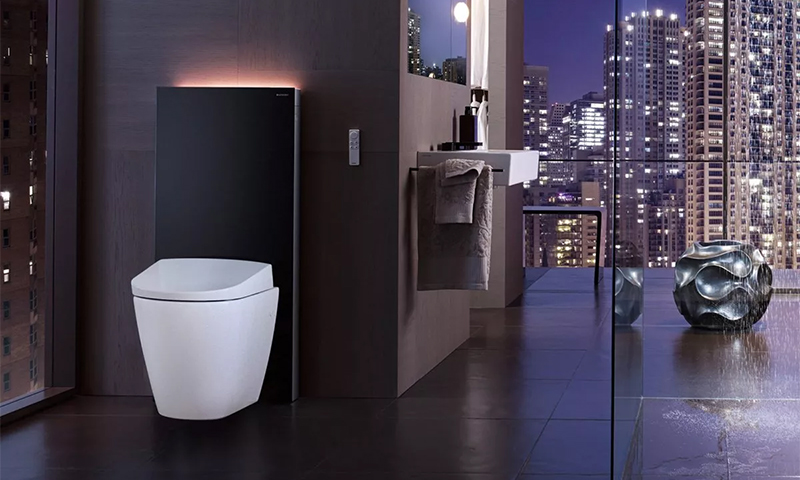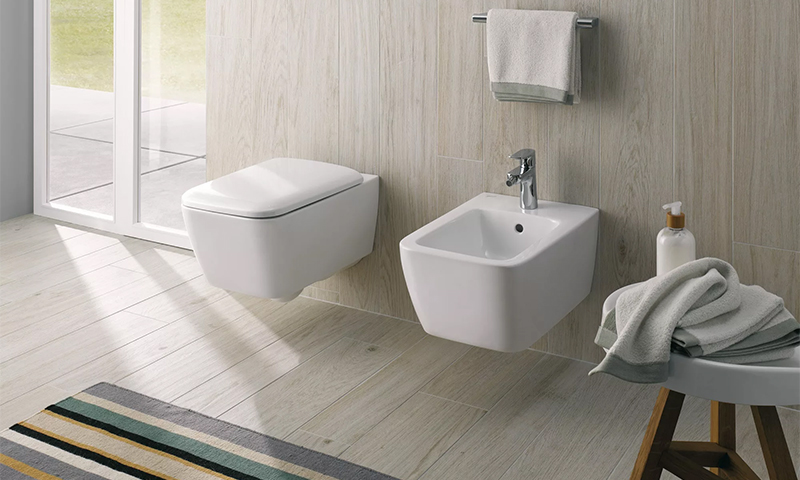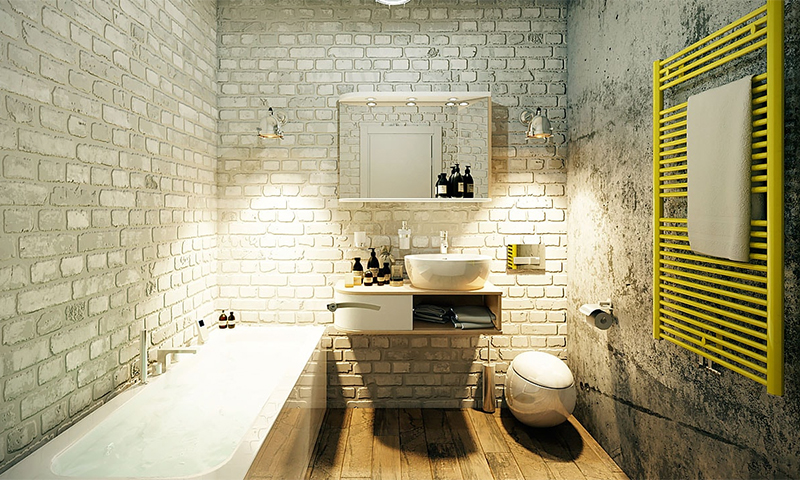Having a private house and living in it, the owners inevitably at one time meet the task of the device of autonomous sewage. The question is thin, so no one wants to pull with it. There are various options for solving the problem, but the most suitable one is selected based on the amount of runoff, soil characteristics, groundwater level, wind rose, frequency of visits to a privately owned property. As if there is nothing difficult in choosing and it’s easy to determine the autonomous sewage system. But this is not quite so - read the article and make sure that before buying you need to take into account a lot more nuances than it seems at first glance.
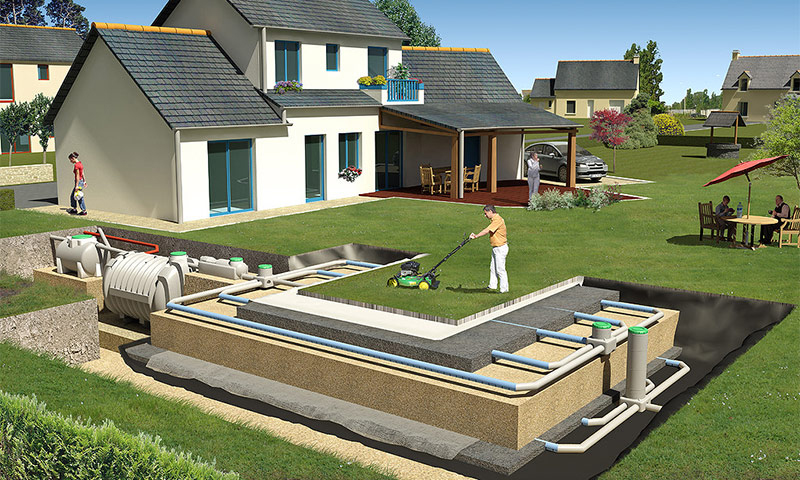
Content:
The best manufacturers of autonomous sewers for private houses - which company to choose
You can do a tremendous job - to do all the calculations, to pick up a place for planting equipment, find out the groundwater level and geological section.
After that, buy a septic tank, dig a pit, install equipment, connect pipelines, perform waterproofing and insulation, and backfill the soil.
After some time, it may turn out that the plastic cracked, sewage “shattered” the entire personal plot, and it is simply impossible to breathe at home.
That is why, in order not to overshoot the choice, it is better to buy, albeit a little more expensive, but high-quality autonomous sewage system, which over time will not upset.
Such systems are produced by the following companies:
- Eco-Grant (Topas, Poplar).
- "Unilos" (Astra).
- “Purges” (Purges).
Continuing the topic touched upon, in this article we present the best models of autonomous sewage systems, among which we recommend making your own specific choice.
Types of autonomous sewer for private homes
Cesspools
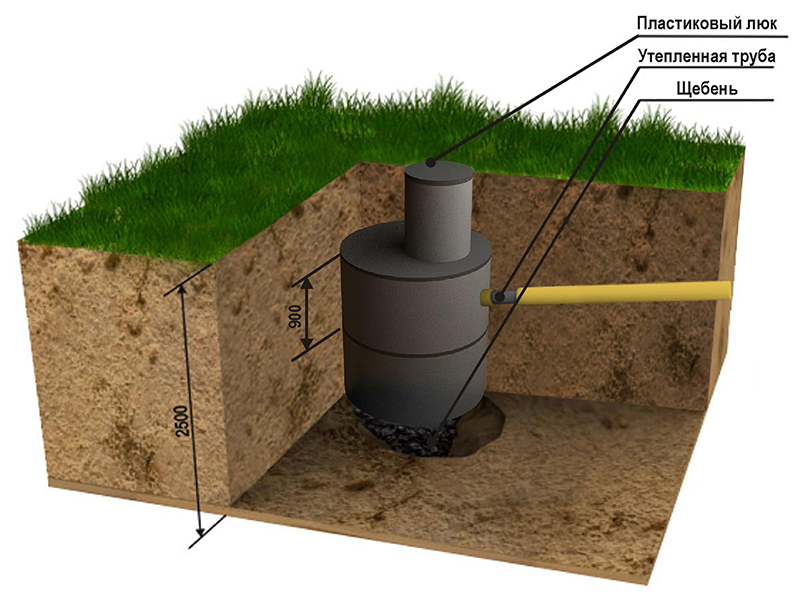
The simplest type of autonomous sewage system is a cesspool, which is a reservoir of bricks, plastic, monolithic reinforced concrete or reinforced concrete rings with a hatch in the upper part. It is buried in the ground to a depth of 3 m, and taking into account the level of groundwater.
Since the drives must be absolutely tight, they follow certain rules when they are installed:
1. The brick will be applied ceramic - the capacity is laid out in a round shape;
2. Strong and massive reinforced concrete rings are mounted using a crane;
3. In the construction of a monolithic reinforced concrete structure, formwork, fittings and high-quality c / n mixture are used;
4. Plastic must be resistant to various aggressive media.
The principle of operation of such a vessel is simple: a pipe of Ø100 mm is pulled from the internal sewage of the house to the vessel, and with a slight bias towards the drain, its depth should be below the mark of soil freezing.
With a certain frequency comes the sewage truck, which pumps out the accumulated impurities. The frequency of sewage intake depends on the filling rate of the pit, and the distance between the ground and the surface of the liquid should not be less than 35 cm - otherwise there is a possibility of contamination of the soil.
Such a procedure should be performed at least 2 times a year - after pumping, the drive is disinfected.
Benefits:
- tightness of the tank, eliminating contamination of soil and groundwater;
- the possibility of mounting their own hands;
- low cost;
- simplicity and effectiveness of the design;
- non-volatility - there is no need to use electricity;
- basic emptying with the help of special equipment.
Disadvantages:
- the need for regular periodic cleaning, and not cheap;
- oozing odor;
- the inability to device at high groundwater.
The cesspool is an effective sewage construction for homes used in the summer.
Septic tanks
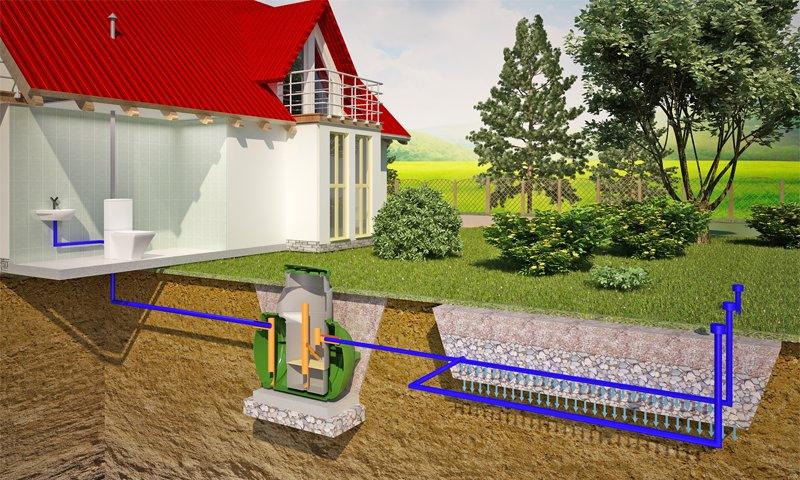
Septic tanks are used for sewage treatment - devices that differ among themselves depending on the design and features of functioning. They can be 2- and 3-chamber complete with a filtration well, a filtration field, an infiltrator.
All three-dimensional structures are buried in the ground and connected by pipelines - the tank installation field must be above the groundwater level.
The task of septic tanks, in contrast to cesspools, is not to accumulate waste liquid, but to clean it of contaminations of the most diverse nature.
When using a filtration well, water first passes through 3 sections of the device, as a result, solid impurities fall to the bottom, fat films float to the surface, and moderately purified liquid enters the reservoir into the tank, the bottom of which is made of sand and rubble. As a result, the clarified water passes through an artificially created pillow.
Benefits:
- absolute non-volatility of the system;
- long term honey cycles;
- sufficient efficiency of functioning;
- comparative simplicity of design;
- availability of self-exploitation;
- infiltration is rarely serviced.
Disadvantages:
- the need for rare but regular maintenance;
- impractical use in clay soils and high groundwater;
- filtration fields are expensive.
When compared with the cesspool, the septic tank is much more efficient. At the same time, system maintenance requires more time and effort. This cleaning is practiced in homes where families live year-round.
Biological treatment stations

When the groundwater is high and the area is limited, the factory septic tank with a biofilter gives good results. It represents a 3-chamber capacity, which consists of the following elements:
1. Septic department,
2. Anaerobic Bioreactor
3. Biofilter
In the course of cleaning drains:
1. Directed to the 1st compartment, where solid fragments settle, and the fats float;
2. Through the lattice membrane seep into the second chamber, in which they are subjected to coarse filtration;
3. In the third tank they are saturated with anaerobic bacteria that destroy organic matter.
4. At the last stage, a harmless outlet fluid is discharged, for example, into a ditch.
Such systems are used in homes with permanent residence - anaerobic bacteria can be injected even through the toilet.
The most complex and at the same time the most effective is a station for deep biological treatment.
It is a system, in the case of which all key components are assembled:
1. Receiving chamber;
2. Aerotenk;
3. Secondary sump;
4. Sludge stabilizer.
The cleaning process is as follows:
1. Wastewater is fed to a sump in which fat is separated and insoluble particles settle;
2. The filtrate is altered with aerobic bacteria and algae;
3. By means of an electric pump, anaerobic microorganisms are air enveloped;
4. The last chamber settles silt - it is then fed back to the aeration tank.
5. As a result, a liquid comes out of the device with cleaning up to 99% - it can also be used for watering agricultural crops.
Benefits:
- high degree of purification - from 85 to 99%;
- compactness of the equipment, especially in the case of deep cleaning;
- there is no need for constant maintenance;
- installation is possible on any site, regardless of geological conditions;
- no unpleasant odors;
- simple installation and durability of operation.
Disadvantages:
- energy dependence with the option of deep cleaning;
- the need for regular supply of air (oxygen) to aerobic bacteria;
- high price.
Deep bio-cleaning systems are very effective - they can process more than 1.6 m3 / day.
Options for choosing an autonomous sewer for a private house
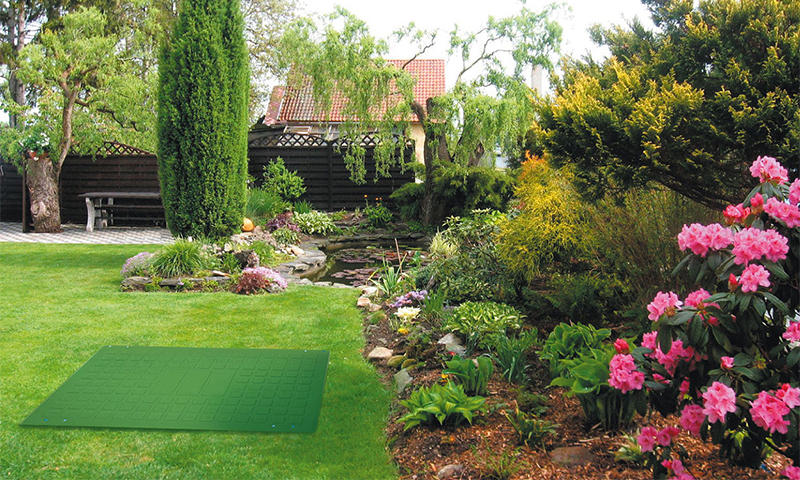
Distance
If the choice fell on a cesspool, you need to consider that the distance of the tank to the wells is from 20 m, to the water lines - from 10 m, to the neighboring plot, from 1 m, to construction sites - from 10 m. In addition, the drive should not be buried deeper than 3 m.
Plot area and ground
If you intend to use a septic tank, you can choose the option with a final infiltrator, filtration well or filter field. The first and last are suitable only if there is a land plot of the required area, the presence of sandy or sandy sandy soil, and deep groundwater.
Performance
When choosing the performance of a septic tank, it is desirable to take into account not only their own users with sanitary appliances, but also people who often come to visit.
Cost of
When selecting factory wastewater treatment plants, it is necessary to consider alternative, cheaper options.
Additional criteria
Mandatory attention is drawn to the following criteria:
1. Warranty period;
2. The presence of a service network;
3. Cost of goods and installation services;
4. Authority of the manufacturer.
Which autonomous sewer for a private house to choose
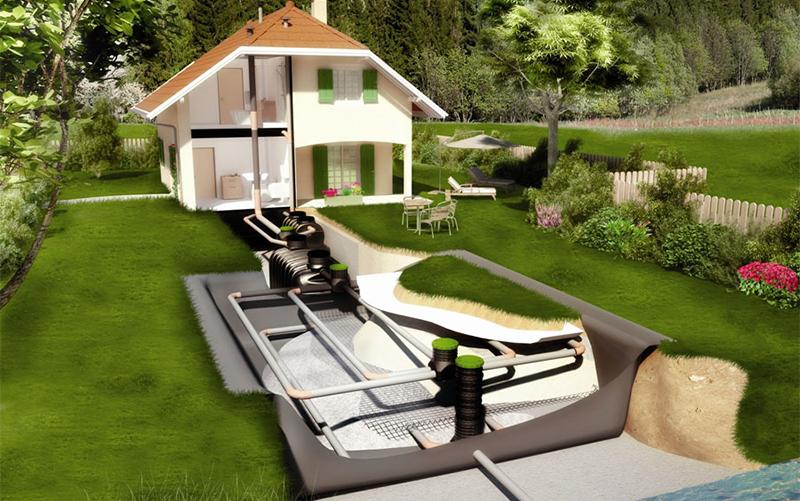
1. If a person has a country house and his visit is extremely rare, it makes no sense to arrange a complex and expensive cleaning system. In this case, the sump will be enough, pumping out the sewage from which will be performed extremely rarely, as a result, the assenizator machine will eventually cost a penny.
2. For removal of drains from a house in which a family of 3, 4 people lives regularly, a septic tank will be quite effective. It is affordable and copes well with its task. But in this case there are a few caveats: the ground is suitable only for sandy or sandy, and the soil water is only low. In addition, under the filtration fields need a large plot of land.
3. The most advanced and effective are biological treatment stations.
4. Septic systems with anaerobic bioreactor and biofilter in the composition achieve a result by 85 ... 95%. Exploiting these structures, you only need to periodically add anaerobic bacteria - it is possible through the toilet.
5. The most advanced is the station of deep biological treatment, consisting of several compartments. Such a machine is installed for any house in use - it reaches the degree of cleaning up to 99%, performance from 1.6 m3 / day.
How much is an autonomous sewer for a private house
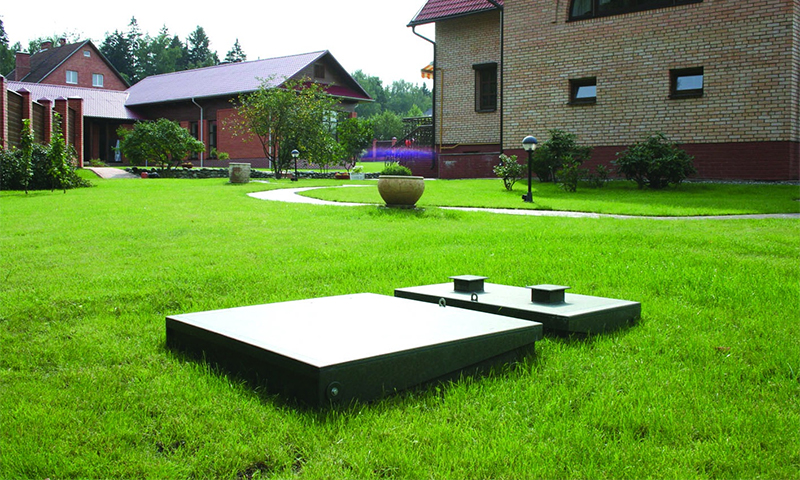
1. The drive 2000 (for the cesspool): 1.7 / 1.1 / 1.65 m, volume 2000 l, wall thickness 14 ... 16 mm. ≈ 25 thousand rubles.
2. Poplar 3: 1.06 / 1.12 / 2.125 m, for 3 users, performance 0.65 m3 / h; power is 1,5 kW. ≈ 72.2 thousand rubles.
3. Topaz 4: 2.5 / 0.95 / 0.95 m, for 4 users, capacity 0.8 m3 / day; receiving chamber volume 175 liters; connection depth 0.4 ... 0.8 m; power is 1,5 kW. ≈ 73.0 thousand rubles.
4. Purges 2500: 2.0 / 1.1 / 1.65 m, for 4, 5 users, capacity 0.85 m3 / day; volume of 2500 liters. ≈ 40.4 thousand rubles.
5. Astra 6: 1.2 / 1.15 / 2.445 m, for 6 users, productivity 1.2 m3 / day. 81.6 thousand rubles.
It will be interesting to friends too




